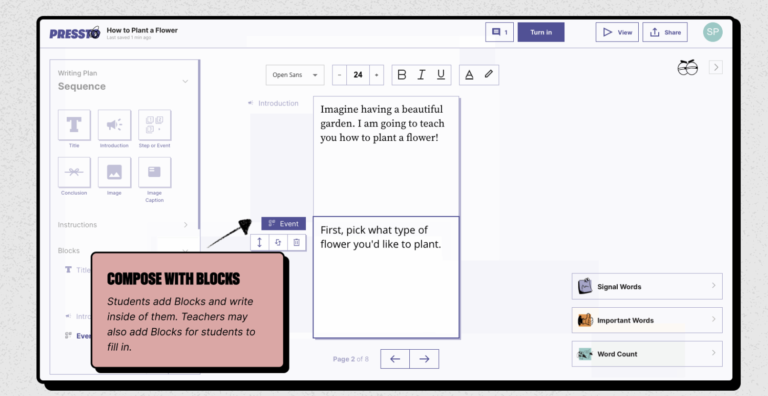The role of creativity in the writing process
Creativity plays a crucial role in the writing process. It is the driving force behind originality, imagination, and the ability to produce engaging and impactful written work.
Students and creativity in writing go hand in hand. Writing is not only a fundamental skill but also a means of self-expression and exploration of ideas. Nurturing creativity in writing can significantly enhance a student’s ability to communicate effectively and develop their unique voice. Here are some ways to encourage creativity in student writing:
- Provide freedom and choice: Allow students to choose their topics or writing prompts. When given the freedom to explore their interests, students are more likely to tap into their creativity and produce unique and engaging pieces.
- Foster a supportive environment: Create a classroom atmosphere that encourages risk-taking and values creativity. Establish an open dialogue where students feel comfortable sharing their ideas without fear of judgment. Encourage peer feedback and constructive criticism to help students refine their work.
- Incorporate different writing styles and genres: Introduce students to various writing styles and genres, such as poetry, short stories, persuasive essays, and creative nonfiction. Exposing them to different forms of writing expands their horizons and allows them to experiment with different techniques.
- Use visual aids and prompts: Visual aids, such as images, paintings, or videos, can serve as excellent prompts for writing. Encourage students to observe and reflect on visual stimuli and let their imagination take over as they create narratives or descriptions inspired by the visuals.
- Emphasize the revision process: Teach students that writing is an iterative process. Encourage them to revise and refine their work, focusing on aspects like structure, word choice, and clarity. Emphasize that creativity can be nurtured through revisiting and reimagining their initial ideas.
- Encourage reading: Reading is an essential component of developing strong writing skills. Encourage students to read widely and expose them to different literary styles and voices. Reading can inspire their creativity and provide them with a broader understanding of storytelling techniques.
- Incorporate collaborative writing activities: Collaborative writing activities, such as group storytelling or shared writing exercises, can foster creativity by encouraging students to build on each other’s ideas. Collaboration helps students see different perspectives and learn from their peers’ creativity.
- Provide time for unstructured writing: Dedicate class time for free writing sessions where students can explore their thoughts and ideas without constraints. This unstructured writing time allows them to tap into their creativity and develop a habit of expressing themselves freely.
- Celebrate and showcase student work: Recognize and celebrate students’ creative writing achievements. Share their work with the class, display it on bulletin boards, or create a class anthology. Public recognition and validation of their creativity can inspire students to continue exploring their writing talents.
Remember, each student is unique, and their creative processes may differ. Encourage individuality and personal expression while providing guidance and support along the way. By fostering creativity in writing, you empower students to develop their voices, think critically, and communicate effectively in a variety of contexts.
Pressto helps students write across a range of subjects and interests and produce their own digital essays or pages, or printable zines.
Learn more: https://www.joinpressto.com/







